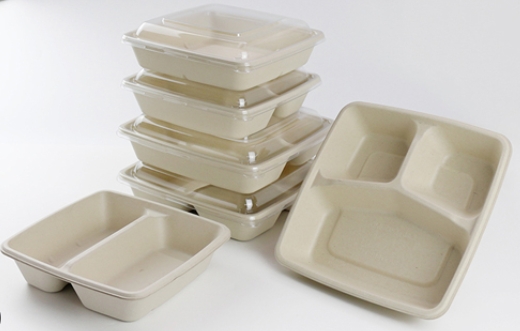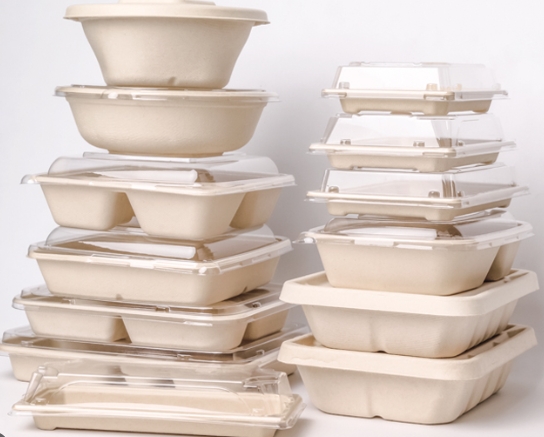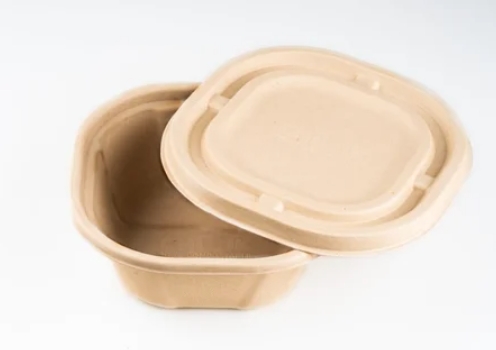
Content Menu
● Understanding Biodegradable Containers
>> What Are Biodegradable Container Boxes?
>> Why They Matter
● What Are Plastic Containers?
● Material Composition
>> Natural vs Synthetic Origins
● Production Processes
>> Biodegradable Manufacturing
>> Plastic Manufacturing
● Decomposition and Environmental Effects
>> How Biodegradable Containers Break Down
>> The Lifespan of Plastic Containers
● Performance Comparison
>> Durability
>> Safety for Food and Beverage
>> Aesthetic and Customization
● Economic Perspectives
>> Cost Issues
>> Scalability
● User Convenience and Limitations
>> Everyday Usage
>> Waste Management
● Legislation and Industry Trends
● Case Studies and Shifting Practices
>> Food and Beverage Sector
>> Retail Packaging
● Conclusion
● FAQs
>> 1. What is the main advantage of using biodegradable container boxes over plastic containers?
>> 2. Are all biodegradable containers compostable at home?
>> 3. Can plastic containers be reused safely?
>> 4. Why are biodegradable containers more expensive?
>> 5. How can I dispose of biodegradable packaging properly?
As environmental awareness grows globally, the discussion around sustainable alternatives to everyday items is more vital than ever. One of the central debates in the packaging world is the comparison between biodegradable container boxes and plastic containers. While both serve a similar basic function—storing and transporting goods—their compositions, environmental impacts, and long-term implications differ dramatically.
This article explores the real differences between biodegradable and plastic containers, from production and performance to environmental footprints and disposal methods. If you're a consumer, business owner, or sustainability advocate looking to make informed choices, this comprehensive guide offers everything you need to know.

Understanding Biodegradable Containers
What Are Biodegradable Container Boxes?
Biodegradable containers are packaging products made from natural, plant-based materials capable of breaking down naturally. These materials include cornstarch, wheat bran, bamboo, palm leaves, and sugarcane pulp. Biodegradable containers are typically used for food packaging, take-out boxes, and disposable ware, offering a cleaner alternative to traditional plastic.
Why They Matter
The push for biodegradable packaging stems from the urgent need to reduce pollution. These containers disintegrate under the right environmental conditions, returning to the soil without leaving toxic residues or polluting waterways.
What Are Plastic Containers?
Plastic containers are synthetic packaging products made through chemical processes using petroleum-based resources. Common types include polyethylene, polypropylene, polystyrene, and PET. They're known for durability, water resistance, and affordability, making them a staple in industries ranging from food to consumer goods.
Despite their benefits, traditional plastics are non-biodegradable, which poses severe environmental consequences.
Material Composition
Natural vs Synthetic Origins
Biodegradable containers draw from renewable sources—plants that grow quickly, require less energy to harvest, and return minerals to the earth through composting. Most do not rely on chemical stabilizers or synthetic binders.
In contrast, plastic containers are synthesized from petroleum derivatives, a non-renewable resource. The petrochemical makeup is engineered for durability and versatility—qualities that also make it resistant to degradation.
Production Processes
Biodegradable Manufacturing
The processes behind biodegradable containers typically include grinding raw plant material, molding it into form, and heat-treating or compressing it for durability. These systems often emit fewer harmful emissions and make productive use of agricultural waste that would otherwise be discarded.
Plastic Manufacturing
The creation of plastic containers is notably complex. It requires extraction, chemical refinement of fossil fuels, polymerization, and molding. These steps are energy-intensive and end with a high environmental toll—especially due to emissions and long-term harmful byproducts.
Decomposition and Environmental Effects
How Biodegradable Containers Break Down
Once disposed of in a compost-rich or oxygen-rich environment, biodegradable containers break down thanks to microbial activity. They transform into water, carbon dioxide, and organic matter. This process completes within months under the right conditions and leaves behind minimal waste.
Improper disposal in landfills or frozen environments slows down this process and diminishes ecological benefits. Proper disposal systems are essential.
The Lifespan of Plastic Containers
Plastic containers can take centuries to decompose. Instead of naturally breaking down, they fragment into microplastics—tiny particles that accumulate in oceans, rivers, and soil. These microplastics have far-reaching consequences, affecting marine life and entering the human food chain.
Incineration of plastic releases toxic gases, while recycling is often hampered by contamination or lack of infrastructure.

Performance Comparison
Durability
Plastic leads in durability. It resists extreme conditions, including moisture, heat, and heavy loads. It's preferred for long-term storage, frozen items, and perishable goods.
Biodegradable containers, on the other hand, are ideal for short-term use. They can absorb moisture or change shape when heated, although newer innovations are improving these limitations.
Safety for Food and Beverage
Plant-based containers are generally free from harsh chemicals, making them safer choices for food applications. Many plastics, despite food-grade certifications, can leach chemicals under high temperatures—especially when reused or microwaved repeatedly.
Aesthetic and Customization
Plastic allows for more flexibility in design, including transparent packaging, intricate molds, and brand printing. Biodegradable options are catching up, though, with companies innovating colors, textures, and embossing for branding and differentiation.
Economic Perspectives
Cost Issues
Currently, producing biodegradable alternatives is costlier due to limited-scale manufacturing and sourcing variability. However, as demand rises, costs are expected to decrease.
Plastic remains more cost-effective, supported by a matured production pipeline and abundant global supply networks.
Scalability
Plastic holds the edge in scalability for large enterprises needing consistent, bulk manufacturing. Despite this, many startups and mid-sized businesses are successfully navigating the biodegradable path with scale-friendly options.
User Convenience and Limitations
Everyday Usage
Plastic's spill-proof design, resealability, and durability offer unmatched convenience for consumers. These traits make plastic the preferred option for liquid-rich foods and portable meals.
Biodegradable containers require more careful handling. They're suitable for dry or semi-moist foods but can struggle with high-temperature liquids or prolonged handling.
Waste Management
Disposing of plastic requires access to proper sorting and recycling systems, many of which are underfunded or inefficient. In contrast, biodegradable materials need composting systems, which are not yet universally available.
Users must educate themselves on the proper disposal channels for each material to achieve maximum sustainability impact.
Legislation and Industry Trends
Governments and advocacy groups are pushing for reductions in single-use plastic through:
- Bans on plastic cutlery, bags, and packaging in food services
- Mandatory eco-packaging for certain industries
- Incentives for compostable and renewable material adoption
Businesses—in both food service and e-commerce—are embracing these changes to align with consumer demand and regulatory expectations. Third-party certifications and green seals are becoming valuable tools for market credibility.
Case Studies and Shifting Practices
Food and Beverage Sector
Many cafes, juice bars, and quick-serve restaurants have switched to biodegradable boxes and utensils. These businesses often leverage this transition as a marketing advantage, appealing to eco-conscious customers.
Retail Packaging
Online retailers are experimenting with biodegradable mailers and inlays without compromising product safety. Companies in the beauty and wellness industries, in particular, are rapidly adopting biodegradable alternatives for creams, oils, and organic products.
Conclusion
The comparison between biodegradable container boxes and plastic containers is more than a question of material. It's a reflection of our collective priorities—sustainability, safety, and environmental responsibility.
While plastic remains dominant in performance and cost, the environmental repercussions are too significant to ignore. Biodegradable alternatives offer a clean, progressive solution that aligns more closely with ecological preservation and long-term safety. As global infrastructure and technology improve, these solutions will become more accessible, robust, and cost-efficient.
Choosing biodegradable over plastic isn't just an eco-friendly decision—it's a statement of commitment to a more sustainable and responsible future.

FAQs
1. What is the main advantage of using biodegradable container boxes over plastic containers?
Biodegradable containers offer a significant environmental benefit. They break down naturally, reduce landfill waste, and pose less risk to marine life and ecosystems.
2. Are all biodegradable containers compostable at home?
No, not all are suitable for home composting. Some require industrial facilities for proper breakdown due to thickness or specific component materials.
3. Can plastic containers be reused safely?
Yes, certain types of plastic can be reused, especially if labeled for food-grade use. However, caution is advised as repeated heating or washing can degrade the material and lead to chemical leaching.
4. Why are biodegradable containers more expensive?
Biodegradable containers are often made from newer materials and produced at a smaller scale, leading to higher production costs. As demand increases and technology advances, prices are expected to lower.
5. How can I dispose of biodegradable packaging properly?
The best way is to place biodegradable packaging in a compost bin that goes to a certified composting facility. If home composting is possible, ensure the product is labeled as home-compostable.

















